The Burton Binge: "Frankenweenie"
Each Sunday with “The Burton Binge,” Sam Watermeier will look back at one of Tim Burton’s films, ultimately tracing the return to the auteur’s roots with the October 5 release of “Frankenweenie,” an animated adaptation of Burton’s first live-action short film.
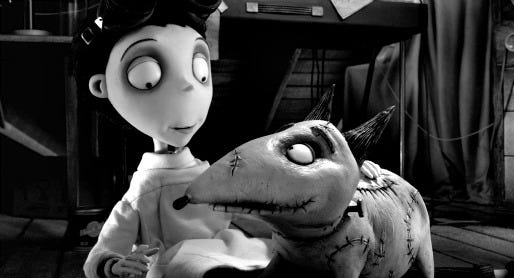
Halfway through the childhood adventure “Frankenweenie,” a science teacher asks a question essential to understanding a character’s scientific troubles. “Do you love your experiment?” he probes. “Science comes from here,” he says, pointing to his heart.
This statement is the key to understanding the success of the film. Like its titular science experiment, Tim Burton’s animated remake of his 1984 live-action short works because it’s infused with pure intentions. While it’s yet another journey into familiar territory for Burton, it’s one closer to his heart — a much-needed reconnection to his roots.
Set in a surreal suburbia similar to Burton’s hometown, “Frankenweenie” follows young Victor (Charlie Tahan) as he deals with the consequences of bringing his dog back to life. Like young Burton, Victor hides in his attic like a mad scientist, making monster movies and engaging with what is only tantalizingly alive. The film’s black-and-white stop-motion animation beautifully underscores this sense of intangibility.
Like older Burton, Victor is questioned for indulging in what should be let go. His dog’s resurrection is the ultimate embodiment of this dilemma. Through Victor’s poignant and enlightening reconnection with his dog, Burton defends the notion of returning to a rotting source. But when Victor’s peers attempt to resurrect their own pets (to disastrous effects), you can’t help but feel that Burton is also commenting on the dangers of reviving old material.
It’s quite fitting that Burton is injecting this commentary into a remake of a film that booted him from the studio system. When test audiences cringed at this morbidly curious tale back in 1984, studio executives fired Burton from Disney.
But like Victor, Burton pressed on, never letting this experience discourage him from engaging in whimsy.
By stirring up sympathy for the otherworldly characters of his cinematic settings, Burton has proved that these worlds are just as worthy — and perhaps not unlike — our own.
As Edwin Page wrote in “Gothic Fantasy: The Films of Tim Burton,” “The alienation of Burton’s lead characters is an accentuated take on the otherness many of us have felt in our lives. Each of us has felt different or out of place, and can therefore sympathize with these characters to a degree, though their extreme natures does put them beyond the bounds of our experiences.” Burton’s goal is to break those boundaries, to free himself (and us) from places like suburbia and Disney Studio — places where people feel pressured to reflect the sunny disposition of their environment at all times.
Burton has succeeded where his characters have failed by creating his own world within our flawed one. With “Frankenweenie,” he goes back to his childhood to do so, bringing hope and possibility to an age of nothing but melancholy wonder.
The film is a wonderful reintroduction to Burton, evoking warm familiarity and a bold chill of something new. It’s also a great reminder of why Burton is still around — one audiences desperately needed especially in the wake of “Planet of the Apes” and “Charlie and the Chocolate Factory,” films that seemed to exploit rather than develop Burton’s style.
A heartfelt tale of love and loss, “Frankenweenie” is a vivid example of how Burton uses film as an emotional sleeve — a canvas for him to project his repressed angst, to explore his melancholy wonder. The universe would not be balanced were it not for artists like Burton swimming against the current. After all, the world cannot have normalcy without a little wonder.
4 Yaps
Now, before I get all verklempt, it’s time for some awards.
Best Male Performance: Johnny Depp, “Ed Wood”
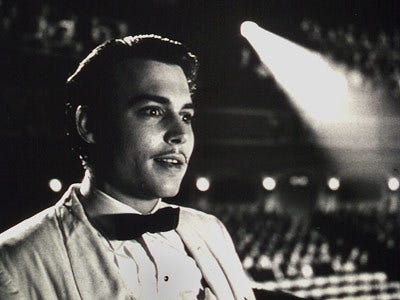
Of all Depp and Burton’s collaborations, this one is easily the most personal, as Depp’s character — ’50s B-moviemaker Ed Wood — is the most obvious reflection of Burton — a director who wears his eccentricity on his sleeve (quite literally as Wood had an Angora sweater fetish!) Watching Depp’s portrayal of his on-set persona, you get the sense that he made movies the way a boy plays mad scientist. With his wide, ever-glistening eyes, Depp beautifully embodies Wood’s innocence and wonder.
Best Female Performance: Catherine O’Hara, “Beetlejuice”
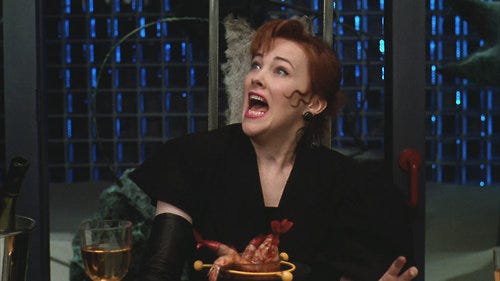
As a snobby New York intellectual bent on exploiting her haunted house, O’Hara establishes herself as a major comic talent. In lesser hands, this character could easily be a one trick pony, but O’Hara evokes a mounting sense of dread at her every nasty turn, ultimately proving that one doesn’t need supernatural forces to get under people’s skin.
Best Scene: Return to the River, “Big Fish”
[youtube http://www.youtube.com/watch?v=hCbdX92hbbg&w=420&h=315]
Yes, I could’ve picked the dance scene from “Beetlejuice,” Batman’s rooftop rescue, or any number of iconic moments, but to me, Burton’s fusion of magic and realism is no more potent than in this concluding scene from “Big Fish.” It’s a powerful, universal moment, one that confronts the larger-than-life nature of parents and an even more complex notion — a son’s simultaneous yearning for, and sorrow regarding, his father’s vulnerability.
Worst Burton Film: “Charlie and the Chocolate Factory”
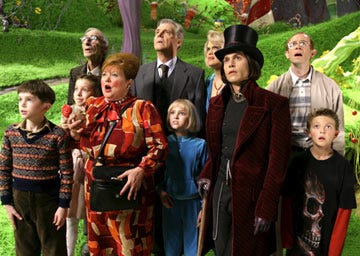
Sure, it’s terrible, but at least Burton tried something…different with “Planet of the Apes.” Here, he turns what should have been an easy triumph into a cold, inorganic, scattershot phone-in job.
Best Burton Film: “Edward Scissorhands”
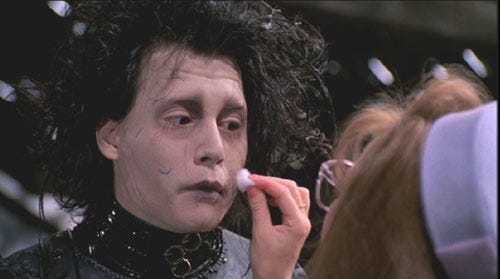
Combining the fragility of youth and the surreal nature of the adult world, this film is a perfect summary of Burton’s filmography. Watching the otherworldly film evokes an even more jarring sensation now, in this era wherein reality seems to be valued more highly than surrealism. But that only makes it a more powerful and transporting fairy tale. Burton’s films are fish-out-of-water tales in which the sea and shore are equally mysterious. And this is his most personal, poignant, and imaginative journey across both.


